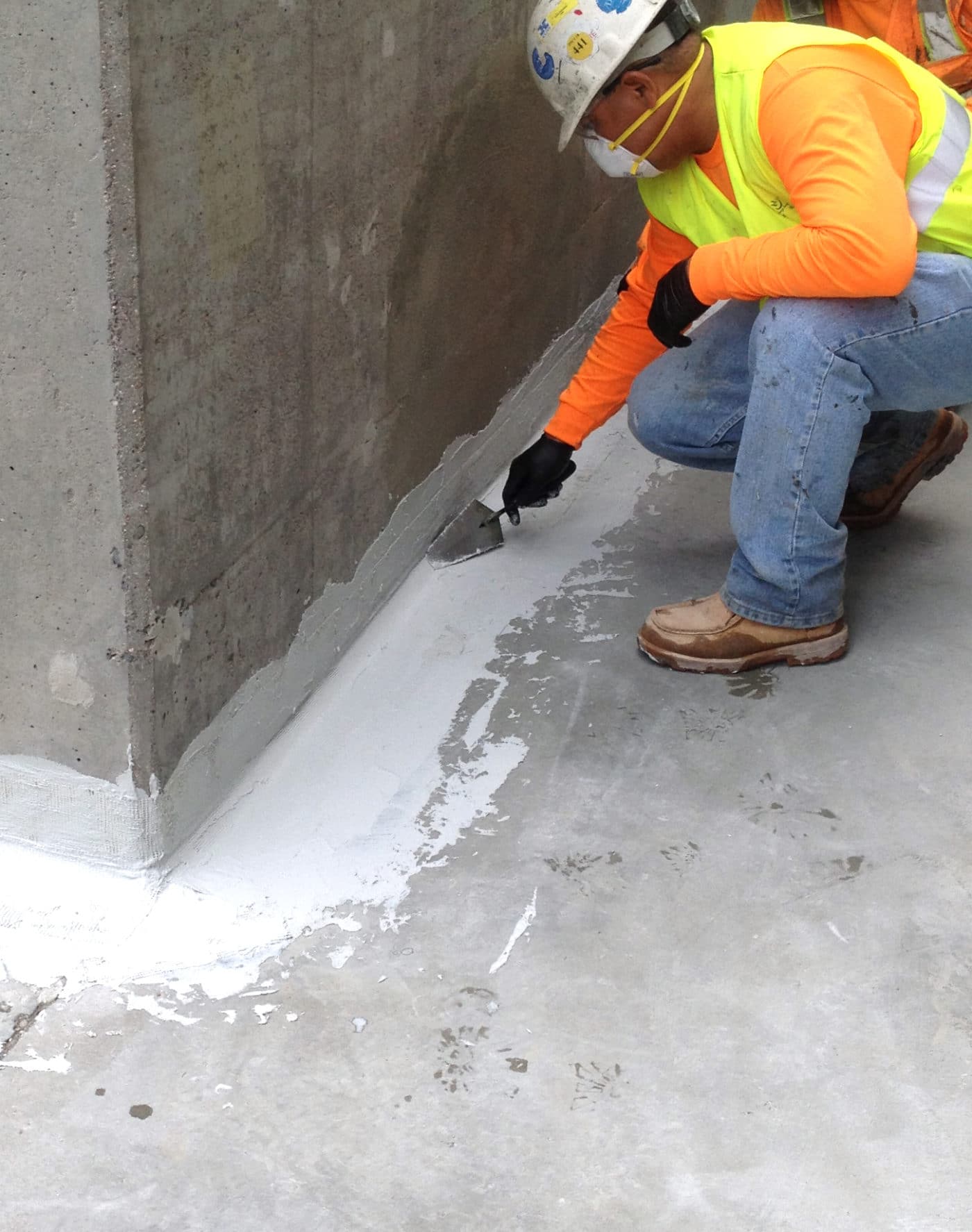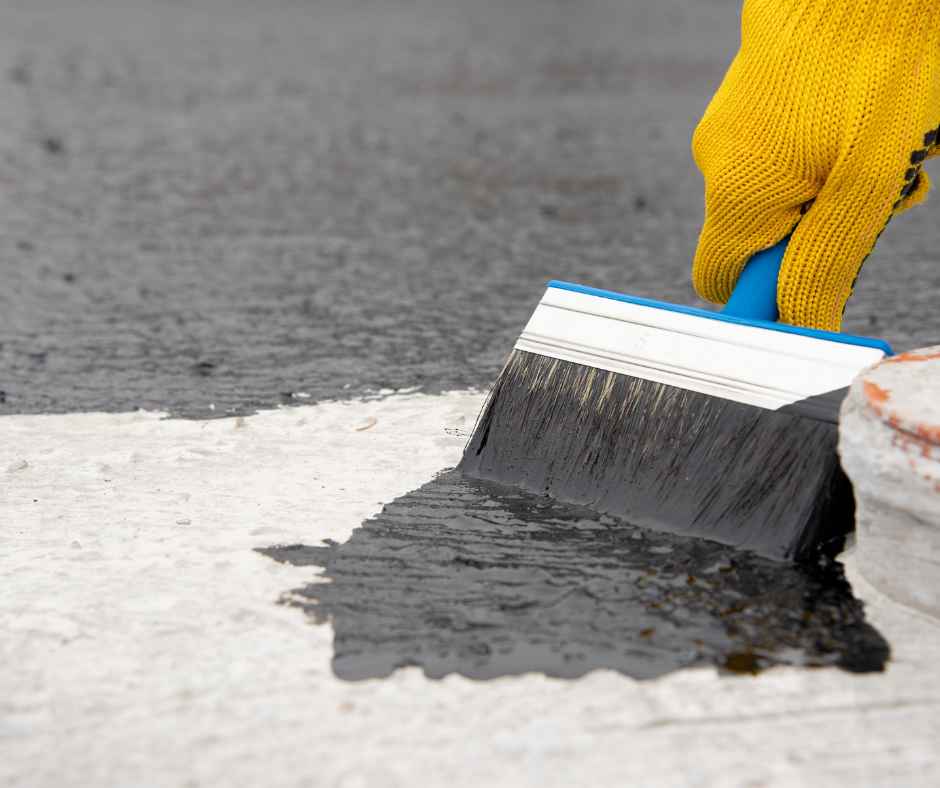How Landscape drainage Omaha Safeguards Your Foundation from Water Runoff
Wiki Article
How Waterproofing Functions: A Detailed Check Out Methods and Technologies
Waterproofing is essential for securing frameworks from moisture-related damages. It entails various strategies and modern technologies that create obstacles versus water invasion. Conventional techniques, such as compacted clay, exist side-by-side with modern advancements like liquid-applied membrane layers. Comprehending the subtleties of these strategies is important for efficient application. The effectiveness of any type of waterproofing option pivots not just on the techniques made use of but additionally on recurring upkeep and inspection. What are the essential factors that influence lasting efficiency?Recognizing the Essentials of Waterproofing
Waterproofing is an important procedure that safeguards structures from water invasion, which can lead to considerable damage over time. This approach involves the application of different products and strategies created to create an obstacle versus moisture. The primary goal is to prevent water from passing through surfaces, which can cause wear and tear, mold development, and structural instability.Various variables affect the choice of waterproofing approach, including the kind of structure, its place, and environmental conditions. Understanding the physics of water motion and the properties of various products is important in selecting an effective waterproofing solution.Effective waterproofing not only safeguards buildings however likewise boosts their longevity and integrity. Typically, it is incorporated right into the layout phase of construction to ensure thorough security. As understanding of water-related problems grows, the importance of understanding waterproofing fundamentals becomes significantly clear to engineers, building contractors, and homeowner alike.Standard Waterproofing Methods
Typical waterproofing methods have been used for centuries, counting on tried and true methods and products to protect structures from water damage. One of the earliest approaches entails making use of clay, which, when compressed, creates an all-natural barrier versus dampness. Additionally, bitumen, a sticky, black product originated from petroleum, has been employed for its water-resistant residential or commercial properties, commonly related to roofing systems and foundations.Another technique includes the application of lime-based plasters, which provide a breathable layer that allows moisture to escape while stopping water access. Thatch roof, a traditional technique still seen in some cultures, provides exceptional waterproofing as a result of its firmly loaded straw layers.Moreover, using stone and brick has projected, as these materials are naturally immune to water when appropriately mounted. On the whole, standard waterproofing approaches highlight the significance of selecting appropriate materials and building techniques to enhance resilience against water invasion.Modern Waterproofing Technologies
Developments in modern waterproofing modern technologies have reinvented the means frameworks are shielded from water damage. Ingenious methods such as liquid-applied membrane layers and advanced sealers have enhanced the efficiency and adaptability of waterproofing solutions. These innovations enable seamless application, reducing the risk of leaks and making sure thorough insurance coverage over intricate surfaces.Moreover, the combination of clever modern technologies, such as wetness sensing units and automated surveillance systems, makes it possible for real-time assessment of waterproofing performance. This proactive strategy promotes prompt maintenance and reduces long-term repair work costs.Additionally, innovations in spray-applied layers supply fast application and excellent attachment, adjusting to different substrates while providing durable defense. Strategies like polymer-modified systems additionally boost flexibility and longevity, making them suitable for varied environments. In general, contemporary waterproofing modern technologies not just alleviate water intrusion yet also add to the durability and sustainability of structures, marking a considerable shift in the industry.Materials Used in Waterproofing
The performance of waterproofing services heavily relies upon the materials utilized in their application. Numerous products are used to create barriers versus water access, each with distinct buildings matched for various atmospheres. Frequently made use of materials include membranes, layers, and sealants.Liquid-applied membrane layers, usually made from polyurethane or acrylic, form a smooth obstacle that adapts to intricate surface areas. Sheet membrane layers, normally built from rubber or thermoplastic, deal sturdiness and are ideal for bigger areas. Additionally, cementitious waterproofing materials, made up of cementitious compounds, supply outstanding bond and flexibility.Sealants made from silicone or polyurethane are necessary for view it now joints and seams, making certain complete protection. Advanced products, such as geo-composite membrane layers, integrate numerous functions, boosting efficiency. On the whole, the selection of waterproofing materials is crucial in accomplishing resilient and reliable water resistance, customized to particular project requirements and environmental conditions.
Typical Applications of Waterproofing
Waterproofing plays a vital function in numerous fields, making sure the longevity and honesty of structures. Usual applications include residential solutions that protect homes, commercial framework that safeguards businesses, and commercial setups that require durable protection versus moisture. Understanding these company website applications highlights the significance of waterproofing in keeping both safety and functionality throughout different environments.Residential Waterproofing Solutions
Lots of home owners deal with obstacles with dampness intrusion, making reliable household waterproofing options crucial. Different methods exist to resolve this problem, consisting of exterior and interior waterproofing systems. Inside options often entail the application of sealants and layers to cellar wall surfaces, which help protect against water seepage. Exterior approaches commonly consist of the installment of drainage systems and water-proof membranes that draw away water far from the foundation.Additionally, property owners might think about sump pumps to get rid of water build-up and dehumidifiers to regulate moisture levels. Appropriate grading and making use of seamless gutters also play a vital function in handling water circulation around the home. By carrying out these strategies, home owners can considerably reduce the danger of water damages and mold and mildew growth, ensuring a dry and secure living atmosphere.
Industrial Infrastructure Security
Efficient waterproofing services play a vital role in the protection of commercial framework. Sump pump installation & replacement Omaha. These techniques are important for guarding buildings, car park structures, and bridges from water damage, which can endanger architectural honesty and cause expensive repair work. Common applications consist of the installation of membrane layers, finishes, and sealants that develop obstacles against moisture infiltration. Areas such as cellars, roofings, and exterior walls are frequently focused on to ensure long life and resilience. Additionally, waterproofing systems can enhance power performance by stopping water-related issues that may bring about mold and mildew growth and damage. By executing durable waterproofing actions, residential property owners can protect their investments and keep functional effectiveness, ultimately contributing to the general sustainability of business centersIndustrial Applications Review
While various industries deal with special challenges, the need for trusted waterproofing services continues to be a continuous in industrial applications. Industries such as manufacturing, construction, and energy frequently experience environments where moisture exposure can threaten architectural stability and functional effectiveness. In manufacturing centers, waterproofing is essential for shielding machinery and products from water damage. In building, it safeguards structures and basements versus groundwater seepage. The power waterproofing membranes sector relies upon waterproofing for the protection of tools in hydroelectric plants and overseas structures. Additionally, food processing sectors use waterproofing to assure health and compliance with safety and security criteria. Generally, efficient waterproofing solutions are important for improving toughness, safety, and performance across various commercial settings.
Upkeep and Longevity of Waterproofing Solutions
Although waterproofing remedies are developed to use long-term security against moisture breach, regular maintenance is vital to assure their effectiveness and durability - Drainage & waterproofing company Omaha. Routine assessments play a considerable function in recognizing potential problems such as splits, peeling off, or indications of water damage. Attending to these troubles promptly can avoid additional damage and costly repairs.Additionally, cleaning the surface of waterproofed areas assists get rid of dust and debris that could jeopardize the stability of the waterproofing barrier. It's likewise suggested to reapply safety finishings or sealants as suggested by suppliers to maintain ideal performance. Environmental aspects, such as UV direct exposure and severe climate condition, can impact the lifespan of waterproofing materials, making regular assessment importantOften Asked Concerns
Can Waterproofing Be Applied in Winter?
The concern of applying waterproofing in winter elevates concerns about attachment and healing. Many items might not do at their finest in reduced temperatures, demanding mindful choice and consideration of particular guidelines for reliable application.The Length Of Time Does Waterproofing Usually Last?
The period of waterproofing efficiency varies based upon products and environmental factors. Normally, it can last from five to 10 years, yet routine maintenance and evaluations are vital to guarantee peak efficiency and long life.Is DIY Waterproofing Effective and Safe?
The effectiveness and safety and security of do it yourself waterproofing depend upon various variables, consisting of material quality and application strategy. While some individuals achieve satisfactory outcomes, others may run into problems that compromise lasting security and structural honesty.What Are the Indications of Failing Waterproofing?
Signs of falling short waterproofing include noticeable water stains, peeling paint, mold development, musty odors, and moisture in wall surfaces or ceilings - Landscape drainage Omaha. These indications recommend jeopardized obstacles, necessitating timely inspection and potential remediation to avoid additional damagesHow Do I Select the Right Waterproofing Service Provider?

Report this wiki page